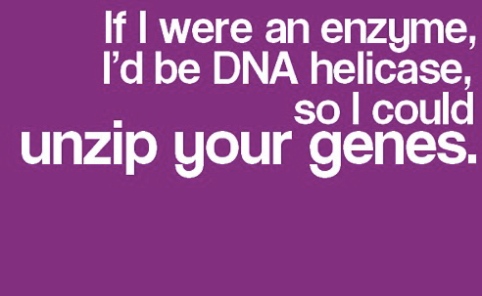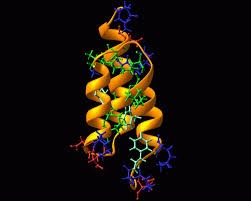
What the heck are enzymes?
You don’t know what enzymes are? Really?! Ok that’s fine. An enzyme is simply a biological catalyst. It speeds up a biological reaction with out being used or changed and it is specific, meaning each enzyme only works on a specific substrate. For example lipase hydrolyses lipids and only lipids. (How do enzymes speed up reactions though? ) OMG glad you asked! They just create a different pathway that has lower activation energy than the original pathway.
Most enzymes are proteins, some are RNA molecules known as ribozymes (they satisfy mostly all of the enzymatic criteria eg. they are substrate specific, they speed up the reaction rate, and they remain unchanged after the reaction. Some antibodies have catalytic properties and these are called abzymes.
What’s the big deal about enzymes?
Without enzymes life is literally impossible! Enzymes allow for respiration to occur. Which means, no enzymes à no energy à no life. Thank goodness for enzymes right? Yeah… trust me I know.
According to Ask.com, in the human body approximately 2700 enzymes can be found. These enzymes are separated into three major groups, which are: metabolic enzymes, food enzymes and digestive enzymes. Their location in the body depends on their function. Enzymes can be found in the mouth in saliva, in the stomach and everywhere else in the body. Without enzymes we are nothing!
This is an energy profile diagram.

This diagram shows exactly how enzymes speed up the reaction to produce product.
But what is activation energy? Activation energy is the minimum energy needed for a reactant to react.
How do enzymes get their name?
Um… their parents obviously name them at birth just like everyone else! No, just kidding. Enzymes are either named based on the substrate they react on, the action they perform, they end in ‘ase’ or they just have some random name that has nothing to do with them. Because names were getting out of hand, our homies at The International Union of Biochemistry and Molecular Biology, IUBMB for short, decided to come up with a naming system. They divided the enzymes into 6 classes. In each class is a sub class and in each subclass there is a sub-subclass. Each is numbered and therefore a series of 4 numbers specifies a specific enzyme (this is called the Enzyme Commission [E.C.] number.
The 6 major classes are:
- Oxidoreductases – Catalyze oxidation-reduction reactions
- Transferases – Catalyze the transfer of C,N or P containing groups
- Hydrolases – Catalyze cleavage of onds by adding water.
- Lyases – Catalyze clevage of C-C, C-S an some C-N bonds
- Isomerases – Catalyze isomerizaton of optical or geometric bonds
- Ligases – Catalyze the formation of bonds between C and O, S, and N couples to hydrolysis of high energy phosphates.
Holoenzyme?? Hol up.. holo what??
Omg chillllll! Its simple! A holoenzyme is just a biochemical compound that is a combination of an enzyme and a coenzyme. And before you go a-wall! A coenzyme is just a substance that is necessary for an enzyme to function.
Inorganic Catalyst v.s Biological Catalyst
Well incase you didn’t know, biological catalyst are THEE (emphasis on thee) fastest by far when compared to inorganic ones. Biological catalysts are also the most efficient. For example: during the Haber process, which makes ammonia, the temperature needed is 450 degree Celsius, at 1000 atm! What? Amylase breaks down starch to maltose in my mouth and at less than 100 degrees Celsius! And unless you’re a fire-breathing dragon it does the same for you!
So whenever you’re feeling on top of the world, and feel that you can take on a lion, tiger or bear… give enzymes a quick shout out, because with them my good friend… you are without life.
Here’s some pickup lines! Use them wisely.


In that order!
Chao for now!


















